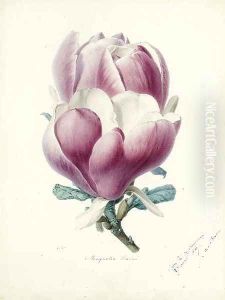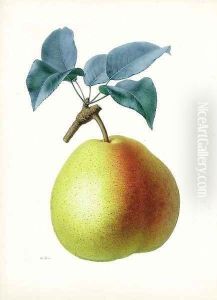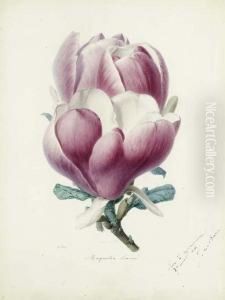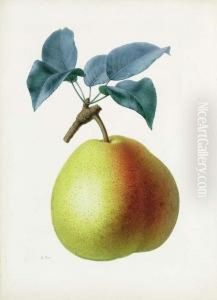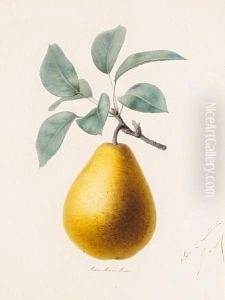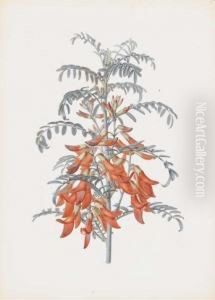Alfred Riocreux Paintings
Alfred Riocreux was a French botanical illustrator born on May 11, 1820, in Paris, France. He was the son of Denis Désiré Riocreux, who was the head of the porcelain painting workshop at the Sèvres porcelain factory. Alfred's environment during his formative years, filled with artistic influence and technical expertise in fine porcelain painting, undoubtedly contributed to his precision and skill as an illustrator.
Riocreux's talent for botanical illustration became evident at an early age. He showed exceptional skill in capturing the delicate details of plants, which led to a lifelong career in illustrating the intricate beauty of flora. His work was characterized by its accuracy, sensitivity, and meticulous attention to detail. This level of precision made his illustrations highly valuable to botanists and horticulturists who required exact representations of plant species for scientific documentation and study.
Throughout the 19th century, Riocreux collaborated with prominent botanists and contributed to significant botanical publications. One of his notable collaborations was with the Belgian botanist Charles Lemaire for whom he illustrated 'Flore des Serres et des Jardins de l'Europe,' a comprehensive work documenting the plants of European gardens and greenhouses. His illustrations were also featured in 'L'Illustration Horticole,' a prestigious horticultural journal.
Riocreux's work as an illustrator extended beyond publications. He also taught botanical illustration and was appointed as an official artist at the Muséum National d'Histoire Naturelle in Paris, where he created a vast number of drawings for the museum's archives and publications. His illustrations are still highly regarded for their scientific accuracy and artistic beauty, and originals can be found in the collections of various institutions around the world.
Alfred Riocreux's contributions to botanical art continued until his later years. He passed away on December 1, 1912, leaving behind a legacy of work that continues to be appreciated by both the scientific community and art enthusiasts. His illustrations not only depicted the botanical diversity of his time but also served as a bridge between art and science, capturing the ephemeral beauty of plants with timeless elegance.
